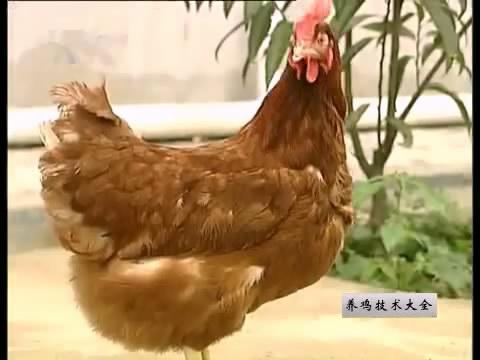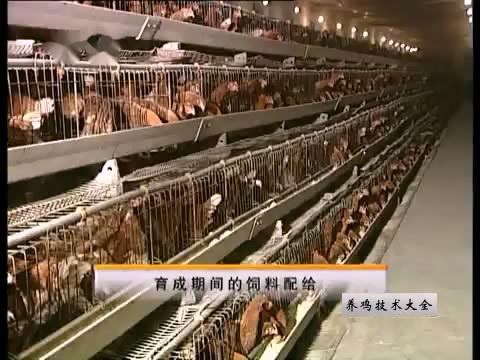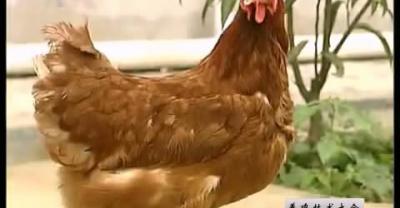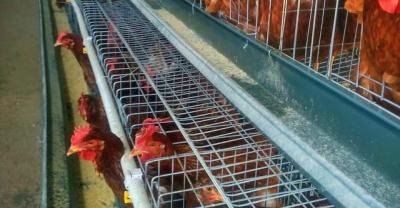Breeding techniques of Hyland brown shell laying hens

Highland brown shell laying hens have always attracted people's attention for their high egg rate. Highland brown shell laying hens start laying early, the laying peak is stable, and the average age of laying is 149 days. The available time of Hyland brown shell laying hens is 80 weeks old, 248 eggs are laid at 60 weeks old, 320 eggs are laid at 74 weeks old, 347 eggs are laid at 80 weeks old, and the egg production decreases after 80 weeks old. The color of Hyland brown shell egg is standard brown. In the early stage of laying, the egg is slightly smaller. At the age of 32 weeks, the average weight of the egg is 62.3 grams. At the later stage of production, the egg is getting bigger and bigger. At the age of 70 weeks, the average weight is 66.9 grams.
The appearance of eggs is also a major factor for consumers to choose to buy. Highland brown shell laying hens have a hard eggshell, which is very convenient to transport. at the same time, the color of the eggshell is bright, giving people a smooth and clean feeling.
For laying hens, only high yield is not enough, but also depends on whether it consumes a lot of feed. Highland brown shell laying hens have a high egg feed ratio and eat less and produce more layers. From 18 to 80 weeks of age, a Hyland brown shell laying hen needs 112 grams of feed per day, and the ratio of feed to egg during the laying period is 2.2 to 2.3. In addition to the above advantages, Hyland brown shell laying hens also have the characteristics of good adaptability to the environment, cold resistance, heat resistance, strong disease resistance, high survival rate and so on. Hyland brown shell laying hen is a breed of Hyland International Co., Ltd., because the color of the eggshell is brown, so it is named Highland brown shell laying hen.
Highland brown shell laying hens belong to four-line hybrid hens, so what is four-line matching? Four-line matching is composed of four lines, pairwise crossing, two single-cross seeds are obtained, and then two single-cross species are hybridized, and the four-line line is formed. In other words, there are four strains of Highland brown shell laying hens, all of which are fixed, and then An and B lines are hybridized to get the male parent, C line and D line of Highland brown shell laying hens, and the female parents of Highland brown shell laying hens are obtained. the commercial Hyland brown shell laying hens were produced by crossing between male parents and female parents.
Through the four-line hybrid Hyland brown shell laying hens, the excellent genes of several chicken breeds were gathered together to become excellent hybrid laying hens.
In the breeding process of Highland brown shell laying hens, experts also used the principle of sex-linked genetic chromogenic genes to achieve the goal that commercial chicks can distinguish male and female according to color as soon as they come out of the shell. The egg yellow chick is the rooster and the brown chick is the hen, so you can easily get the hen of the Highland brown shell laying hen without having to turn the anus to distinguish it. As soon as it comes out of the shell, its identification rate can reach more than 98%, which is beneficial to easily and accurately separate the male and female in the production process, because the laying hens use female chicks, and the male chicks are generally eliminated.
Management of brooding period of Highland brown shell laying hens
The stage from one day to seven weeks of age of Hyland brown shell laying hens is called the rearing period of Highland brown shell laying hens. Before raising chicks, Highland brown shell laying hens should first clean the rearing room and eliminate the pathogenic microorganisms that remain in the rearing room through various disinfection measures. The first time was sprayed with 5% fiery alkali, the second time was disinfected with iodine or chlorine, the third time was disinfected at an interval of a week, and potassium permanganate was used for fumigation.
If the temperature is relatively low the day before entering the chick, it should be heated in advance to keep the temperature near the chicken cage between 35 and 36 degrees Celsius, and then prepare feed and drinking water to create a clean and warm environment to pick up the chicks.
Choose a chicken breeding farm
The management of the breeding farm of Highland brown shell laying hens is very strict. There are special ancestral chicken farms and parents' generation chicken farms in our country. The quality and purity of grandparents' and parents' generation hens have a great influence on the commercial Highland brown shell laying hens. When choosing a breeding farm to order chicks, we can see whether the breeding farm has relevant proof. First of all, there must be a license for livestock and poultry management. The production of chicken seedlings is not allowed without a license for breeding livestock and poultry. The introduction certificate is a certificate issued by ancestral chicken farms to parents' generation chicken farms, which is beneficial to chicken farmers and commercial chicken farmers to choose and buy.
Select chicks
According to the principle of gene coloration, the egg yellow chick is a rooster and the brown one is a female chick. When selecting chicks, we should first look at the mental state of the chicks. We should choose chicks with neat and clean fluff, lively and flexible eyes, balanced body when standing, and strong feet. At the same time, we should also listen to whether the chicks are loud and crisp. Then touch the tightness of the chicken's abdomen, the abdomen is elastic, the navel is closed well, there are no scars, no deformities, only the chicks that meet these requirements can be regarded as high-quality chicks.
Chicken epidemic prevention
After the chicks have been selected, another thing to ask is to make it clear that the chicks have been protected against those diseases after they have just hatched. The chicks were vaccinated with Marek's disease vaccine before the chicks appeared on the stage, and then one-day-old chicks were immunized with Newcastle disease and coccidiosis by mechanical spray. Mechanical spray does not need to catch chickens one by one, and the vaccine can directly contact the mucous membranes of the eyes, nose and pharynx, and even finer fog droplets can enter the upper trachea, which can produce better results than eye drops and nasal drops.
Temperature management during brooding
Hyland brown shell laying chicken stage, the chicken body temperature regulation function is not perfect, it is very important to master the temperature in the rearing room, 1 to 3-day-old chicks, indoor temperature is maintained at 35 degrees Celsius to 36 degrees Celsius, 4 to 7 days old, indoor temperature is maintained at 33 degrees Celsius to 34 degrees Celsius, and then decreased by 2 degrees Celsius per week until the temperature stabilizes at 21 degrees Celsius.
Humidity management during brooding
In general, farmers only pay attention to the temperature in the breeding room, which often makes the air in the room very dry, which is no good. When they first enter the chick, the relative humidity in the room should be maintained at 65% to 70%.
Light management during brooding
Chicks that have just come out of their shells may not eat or drink water if they are not stimulated by light, so they should maintain 20 to 23 hours of strong light every day for the first three days after hatching. bright light can encourage chicks to eat and drink until they gradually return to normal light after 7 days. 40 to 60 watt bulbs are usually used in the henhouse, with the distance between the lights being 3 meters.
Ventilation management during brooding
Ventilation during brooding is also very important, ventilation can keep the indoor air fresh, but to grasp the relationship between ventilation and heat preservation, chicks had better pay attention to ventilation from the second day old and keep the air fresh in the brooding room. special attention should be paid to the contradiction between ventilation and heat preservation in winter, and adequate heating measures and heating equipment are needed to solve this contradiction.
Density management during brooding
During the brooding period, Hyland brown-shell laying hens need to have sufficient area so that each chick has a place to feed and drink, which is good for the quality of brooding and breeding period. Caged chicks, for example, can raise 33 chicks per square meter at the age of 4 weeks and 24 chickens at the age of 7 weeks per square meter.
Drinking water management during the rearing period
After the chicks enter the chicken house, cold boiled water should be used for drinking water in the first three days. The temperature of the water is maintained at 10 degrees Celsius to 21 degrees Celsius. 2% to 5% glucose can be used in the water. Within 10 days, one liter drinking fountain is provided for every 50 chicks. After 10 days, it is best to replace the nipple drinking fountain for the chicks. After changing the nipple drinking fountain, the labor amount of water feeding can be reduced, and it is also good for the chicks to drink freely.
Feed management during brooding
The weight of the chick increases very fast after it comes out of its shell. The weight gain at 2 weeks old is twice that at birth, and at 6 weeks old, it is 10 times that at birth. Moreover, the feathers of chicks grow fast, and feathers account for 4% of body weight at 3 weeks old. Feathers account for 7% of body weight at 4 weeks old. According to these characteristics of chicks, the requirement for protein feed is relatively high in the brooding stage. 0Mel 6-week-old feed formula: corn 61.7%, soybean meal 30%, fish meal 5%, bone meal 2.5%, salt 0.35%, feed additive 0.15%, amino acid 0.2%, choline 0.1%, about 10 grams of multivitamin per 100 kg feed. 6Mel 7-week-old feed formula: corn 70.7%, soybean meal 22%, fish meal 4%, bone meal 2.5%, salt 0.35%, feed additive 0.15%, amino acid 0.2%, choline 0.1%, about 10 grams of multivitamin per 100 kg feed. In addition, the digestive organs of chicks are underdeveloped, the capacity of crop and stomach is small, and the storage of food is limited, so chicks should be fed less frequently in order to achieve the goal of scientific breeding. It can be fed every three hours, day and night.
Hyland brown shell laying hens still have to do a good job of hygiene and disinfection during brooding, which is basically the same as that of other laying hens.

Management of breeding period of Highland brown shell laying hens
The stage from 7 weeks to 18 weeks or 20 weeks of age of Highland brown shell laying hens is called the breeding period of Highland brown shell laying hens. During this period, Highland brown shell laying hens have sound body temperature regulation and strong vitality, and their ability to adapt to the external environment is enhanced. The resistance to disease is significantly enhanced.
Temperature and humidity and ventilation management during the breeding period
During the breeding period, the temperature in the chicken house is not as high as required during the brooding period, generally between 18 degrees Celsius and 23 degrees Celsius, and the relative humidity in the chicken house is maintained at 60 to 70 percent. During the breeding period, the henhouse should be well ventilated, and the purpose of ventilation is to adjust the temperature of the henhouse, reduce the humidity and remove harmful gases from the henhouse. Such as ammonia, carbon dioxide, hydrogen sulfide and other harmful gases. The concentration of ammonia can not exceed 25ppm, the concentration of carbon dioxide can not exceed 1500ppm, and the concentration of hydrogen sulfide can not exceed 10ppm.
Density management in breeding period
As the size of the chicken increases, the density of the flock should be adjusted during the breeding period. Take caged hens as an example. There are 24 Hyland brown shell laying hens per square meter at the age of 7 Mel 10 weeks, and 16 Hyland brown shell laying hens at the age of 14 Mel per square meter at 10 murine 20 weeks old. When adjusting the density, it is necessary to separate cages according to the weight of chickens, especially for chickens with relatively low body weight, it is necessary to strengthen feeding management after grouping, so as to maintain the uniformity of the whole flock. The weight standard of Hyland brown shell laying hens should be 590g at 7 weeks, 1340 grams at 15 weeks and 1550 grams at 20 weeks.
Feed rationing during breeding
During the breeding period, Hyland brown shell laying hens should reduce the content of protein in feed to prevent fat accumulation caused by fat. 7Mel 15-week feed formula: corn 70.8%, soybean meal 19%, fish meal 2%, bone meal 2.5%, wheat bran 5%, salt 0.35%, feed additive 0.15%, amino acid 0.1%, choline 0.1%, about 10 grams of multivitamin per 100 kg feed. After 15 weeks of age, it is necessary to adjust the feed formula again to increase the content of calcium in the feed, so that the calcium in the bones of laying hens can be deposited to the maximum extent. 15Mel 18-week feed formula: corn 64.3%, soybean meal 17%, fish meal 2%, bone meal 2.5%, wheat bran 10%, shell powder 3.5%, salt 0.35%, feed additive 0.15%, amino acid 0.1%, choline 0.1%. Add 10 grams of multivitamin for every 100 kilograms of feed. During the whole breeding period, the flock is generally fed 4 times a day. If the flock is found to be overweight, we can appropriately reduce the feeding times to control the weight of the flock.
Light management during breeding period
First of all, let's talk about the effect of light on the laying of laying hens. Light plays an important role during the breeding period of laying hens. When light waves are transmitted to the pituitary gland through the eyes of the chicken, the gonads produce and secrete hormones, and the ovaries and other reproductive organs of the chicken begin to develop. That is to say, the higher the intensity of light during the breeding period, the longer the light time, the earlier the sexual maturity of the chicken, that is, the laying period.
In the breeding period, the light note affects the sexual maturity of the chicken. If the light time is too long and the intensity is too high, the chicken will mature prematurely and lay eggs early. Some people may think that laying eggs early is not a good thing? Laying eggs too early is really not a good thing, because laying eggs too early, the chicken's bones are not yet fully developed, which is harmful to the health of laying hens, although laying eggs early, but the egg laying peak is short, there is no stamina. Under normal circumstances, as long as the light is kept for 11 hours a day, the laying hens begin to lay eggs at the age of five months.
Management of laying period of Highland brown shell laying hens
Hyland brown shell laying hens entered the management of the laying period after 18 Mel was 20 weeks old. About 146 days later, 50% of the laying hens began to lay eggs. The task of this period is to create a comfortable environment and give full play to the genetic potential of laying hens.
Management of temperature, humidity and ventilation during laying period
The temperature and humidity management and ventilation management during the laying period of Hyland brown shell laying hens are basically the same as during the breeding period, keeping the air fresh, the temperature is controlled at 18-23 degrees Celsius, and the relative humidity is maintained at 60 to 70 percent.
Light management during laying period
During the breeding period, we used the method of controlling light to keep the physical maturity and sexual maturity of laying hens consistent. During the laying period, we appropriately increased the light to increase the egg production. On the basis of the light during the breeding period, we increased the light for one hour a week until the daily light increased to 15 to 16 hours, and then the light was constant at 15 to 16 hours. It still uses a 40-meter 60-watt light bulb with a distance of 3 meters.
Feeding management during laying period
Like all laying hens, Hyland brown shell laying hens need a lot of calcium, phosphorus, vitamins and trace elements during laying. Only when nutrition is well balanced can layers perform better. 19Mel 40-week feed formula: corn 57.25%, soybean meal 24.5%, fish meal 3%, bone meal 2.5%, wheat bran 5%, shell powder 7%, simulation 0.35%, feed additive 0.15%, amino acid 0.15%, choline 0.1%, about 1520 grams of multivitamin per 100 kg feed. 40 Mel 60-week feed formula: corn 60.18%, soybean meal 21.5%, fish meal 2.5%, bone meal 2.5%, wheat bran 5.6%, shell powder 7%, salt 0.35%, feed additive 0.15%, amino acid 0.12%, choline 0.1%. About 15 grams of multivitamin are added to every 100 kg feed.
The useful life of Highland brown shell laying hens is 80 weeks old, and the egg production decreases after 80 weeks old, and gradually loses the value of utilization. At this time, it can be sold as a commercial hen. Generally speaking, the feeding and management of Highland brown shell laying hens is relatively easy, the rate of return is high, and the economic benefit is good.
More at: tm655.com
Wechat: tm655-com
- Prev

How to maximize the profit of laying hens?
Engaged in laying hen farming, whether large companies or retail investors, everyone's ultimate goal is the same, that is profit. But the final profit varies greatly, which is.
- Next

How to spend the winter with jasmine how to cultivate jasmine
Jasmine originated in India, sexual love sunshine, whether winter or summer to ensure adequate sunshine, so there is a "sun-immortal jasmine" said. If there is not enough sunshine, Mo.
Related
- On the eggshell is a badge full of pride. British Poultry Egg Market and Consumer observation
- British study: 72% of Britons are willing to buy native eggs raised by insects
- Guidelines for friendly egg production revised the increase of space in chicken sheds can not be forced to change feathers and lay eggs.
- Risk of delay in customs clearance Australia suspends lobster exports to China
- Pig semen-the Vector of virus Transmission (4)
- Pig semen-the Vector of virus Transmission (3)
- Five common causes of difficult control of classical swine fever in clinic and their countermeasures
- Foot-and-mouth disease is the most effective way to prevent it!
- PED is the number one killer of piglets and has to be guarded against in autumn and winter.
- What is "yellow fat pig"? Have you ever heard the pig collector talk about "yellow fat pig"?

